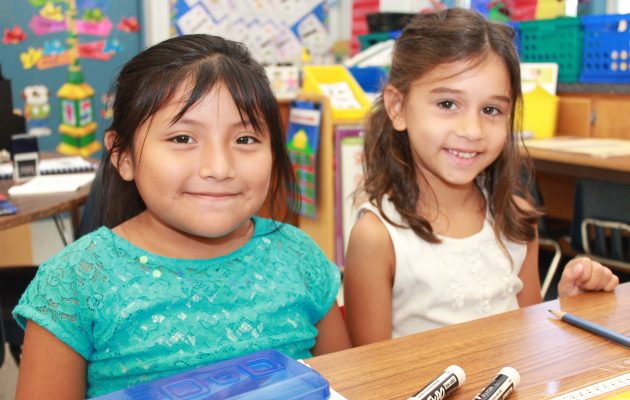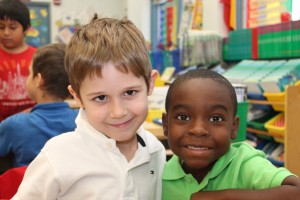Preparing for global community at early age

Students at West Riverside Elementary, from the littlest in voluntary pre-kindergarten to second grade, have the opportunity to earn a leg up on their peers when it comes to global communications. The magnet school on Park Street offers dual language classrooms, teaching subjects in both Spanish and English to children who may be proficient in one or the other or both.
The side-by-side first grade classrooms of Christine Green and Maria Franco have a swinging door in-between, allowing the classes to switch rooms – and mental gears – halfway through the school day.
Green teaches the typical subjects in English, while in Franco’s room, all lessons are conducted in Spanish.
“It really works,” said Franco. “It teaches them mental flexibility, preparing them for a global future.”
Green concurred. “It will give them a career advantage, not just to speak in another language, but to read and write in that language.” Green has been at West Riverside for five years, teaching the English as a Second Language class. “That’s different because you only teach in English and the children are from everywhere, so you’re not just dealing with Spanish-speaking kids.”
In the dual language program, English speaking children are teamed with native Spanish speaking children so that even during play, the immersion for both groups continues. According to Dr. Raymond Carver, assistant principal, the 50/50 program pairs students to teach team building, an integral part of the curriculum. “We started the program in kindergarten and first grade last year,” he said, “offering the dual language class as well as the traditional English only class in those grade levels.”
The program has a waiting list and, while it’s a neighborhood school, many of the students commute from other areas. “This is a small school, so we are like a family. They do everything together, year to year,” said Franco. “This is a perfect location for the program.”
The Spanish-born teacher explained that during the first week of school, if a child doesn’t understand critical instructions, the teachers will communicate in the child’s native language.
“We try to play a little bit the first week so they get used to the routine,” Franco said. “Later on, it’s non-negotiable; we will not speak the other language in our classrooms.”
By the end of the year, teachers, students and their parents will see the difference. “It’s a challenge because it’s a lot of work, but it’s very rewarding,” concluded Franco.
By Kate A. Hallock







